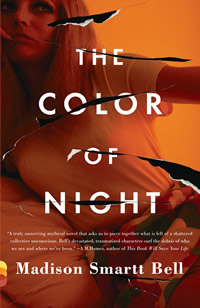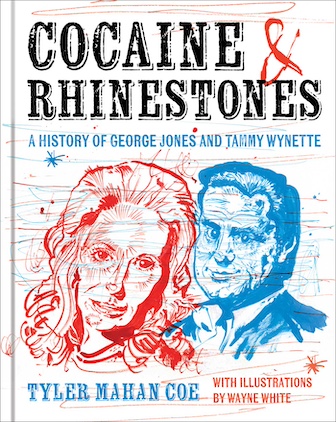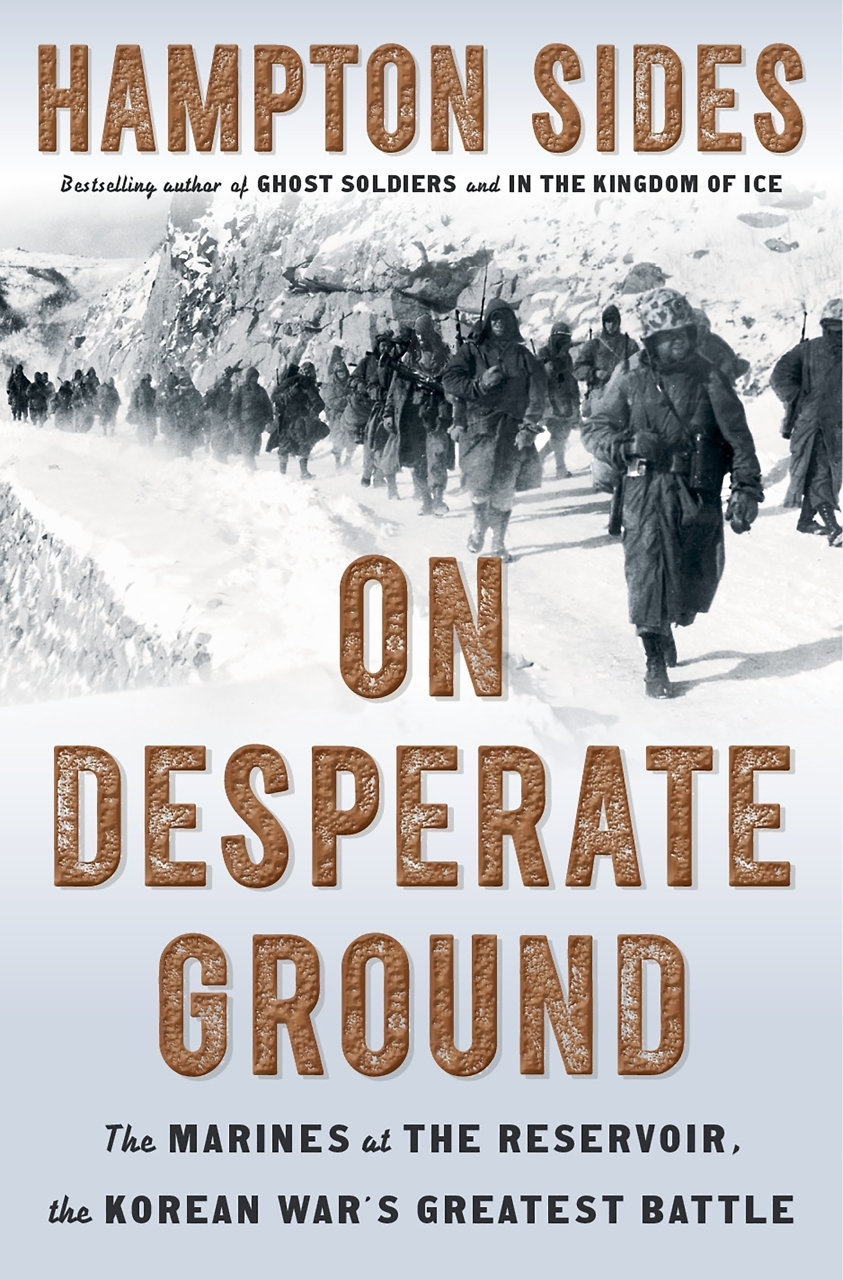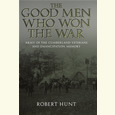A Killer's Tale
Novelist Madison Smartt Bell explores the nature of violence in The Color of Night
Mae, the woman who tells her story in Madison Smartt Bell’s novel The Color of Night, is an aging Las Vegas casino worker. She spends her days dealing blackjack and brushing off the amorous advances of the gamblers. She lives in a trailer park and shops at WalMart. She likes to relax with a drink after work. She also likes to prowl the desert at night, reveling in the combat she witnesses between predators and prey, sometimes playing the role of predator herself. When the 9/11 attacks happen, the televised images of the towers collapsing bring her an exquisite, erotic thrill. “No limit to how many times I could consume, could devour those images,” she says, with a kind of glad amazement. “Again and again the rapid swelling, ripening to the bursting point, and then the fall.” For Mae, watching all that death brings rejuvenation. “I had not known my blood could rise like that. Still, again, despite the withering of my body.”
In addition to exciting her bloodlust, the 9/11 video offers Mae a glimpse of Laurel, her erstwhile lover and fellow member of a murderous hippie cult plainly modeled on the Manson Family. Mae sets out to find Laurel, eventually arriving in New York, where she confronts both her old ally and the ruins at Ground Zero. Along the way, Mae reveals her history, or at least some fantastic version of it. She recounts both the sadistic sexual abuse she suffered as a child and her time in the cult, with its wild mix of drugs, orgies, rape, and murder. Her memories of Laurel are a weird combination of sweetness and brutality. The two women engage in multiple thrill killings, but their relationship is full of tenderness and something like love. Their reunion culminates in an act of violence that is expected and inevitable, and also strangely heartbreaking.
 Although Mae’s narrative gives a clear picture of the prosaic realities of her life, she sees herself and the world around her in entirely mythic terms. She believes herself to be immortal, and her name is a reference to the Maenads, female followers of Dionysus who engaged in orgiastic violence as part of their worship. As Bell explained in his recent interview with Chapter 16, his initial concept for The Color of Night involved “the Manson girls as Maenads,” and the Manson Family, as Bell re-imagines it, is quite explicitly a Dionysian cult. The leader is known as D——, and his retinue includes Orpheus and Eurydice, here called O—— and Eerie. Mae’s penchant for killing animals and donning their skins is an expression of her Maenad aspect. Just as the Maenads slew Orpheus, Laurel and Mae kill O—— in a bloody sexual frenzy. They cut his heart out and, as Mae wistfully recalls, “we shared it between us, like a bowl.”
Although Mae’s narrative gives a clear picture of the prosaic realities of her life, she sees herself and the world around her in entirely mythic terms. She believes herself to be immortal, and her name is a reference to the Maenads, female followers of Dionysus who engaged in orgiastic violence as part of their worship. As Bell explained in his recent interview with Chapter 16, his initial concept for The Color of Night involved “the Manson girls as Maenads,” and the Manson Family, as Bell re-imagines it, is quite explicitly a Dionysian cult. The leader is known as D——, and his retinue includes Orpheus and Eurydice, here called O—— and Eerie. Mae’s penchant for killing animals and donning their skins is an expression of her Maenad aspect. Just as the Maenads slew Orpheus, Laurel and Mae kill O—— in a bloody sexual frenzy. They cut his heart out and, as Mae wistfully recalls, “we shared it between us, like a bowl.”
Mae’s grand mysticism is not all-consuming. She’s sufficiently anchored in the ordinary world to doubt her own story from time to time, and not just its supernatural aspects. When she looks for the scars Laurel should bear from their slaughter of O——, she finds she can’t quite see them: “There might have been a couple of fine white lines; in the dim light it was hard to tell.” This observation encourages readers to doubt Mae, too, and Bell leaves the question unresolved. We get only the story Mae chooses to tell us, and there’s never a moment in her narrative when the author seems to intrude.
Bell is an extraordinarily graceful writer, and he conveys Mae’s wild vision so beautifully that the reader is carried along unresisting, despite the many gruesome scenes. Although the story finally comes to resolution of a sort, ultimately we are left with more questions than answers about Mae, and about the glimpse we’ve been given into her troubled psyche. Bell offers a hint in the book’s epigraph, taken from Iris Murdoch’s The Unicorn. In it, Murdoch references the Greek concept of Até, “the almost automatic transfer of suffering from one being to another.” With our present cultural tendency to analyze everything in psychological terms, there’s a temptation to see this reference to Até as a plea for Mae as a victim, someone who does harm because harm was done to her.
 But from Mae’s perspective—the only one Bell gives us—violence is not a means of balancing the cosmic scales so much as it is a kind of communion with the gods, for both perpetrator and victim. Mae herself invokes the concept of Até and acknowledges the sacramental aspect of suffering as she finishes off a young woman during a killing spree reminiscent of the Sharon Tate murders. “It stays with me, her dying look—how finally, how absolutely she accepted Até, the suffering passed on to her through me.” This is disturbing stuff, not least because Bell has taken us so convincingly into Mae’s world that when she offers these words, near the end of the novel, we understand exactly what she means. We’ve become acquainted with the spiritual currency of bloodshed.
But from Mae’s perspective—the only one Bell gives us—violence is not a means of balancing the cosmic scales so much as it is a kind of communion with the gods, for both perpetrator and victim. Mae herself invokes the concept of Até and acknowledges the sacramental aspect of suffering as she finishes off a young woman during a killing spree reminiscent of the Sharon Tate murders. “It stays with me, her dying look—how finally, how absolutely she accepted Até, the suffering passed on to her through me.” This is disturbing stuff, not least because Bell has taken us so convincingly into Mae’s world that when she offers these words, near the end of the novel, we understand exactly what she means. We’ve become acquainted with the spiritual currency of bloodshed.
In the acknowledgments for The Color of Night, Bell writes that the book is “the most vicious and appalling story ever to pass through my hand to the page, so inevitably some people will hate it.” That’s probably a safe bet. This slender, intense novel offers nothing but Bell’s skillful prose and Mae’s bleak and brutal view of the world. There’s no redemption here, no comfort for the reader—just a brilliant exploration of an unsound mind, and lingering questions about whether Mae, in her madness, acts on an impulse that lurks in all of us.
Madison Smartt Bell will read from The Color Of Night on April 18 at 8 p.m. in the Bluff Room on the campus of at the University of Memphis. To read an excerpt from the book, click here. To read Chapter 16‘s most recent interview with Bell, click here.


